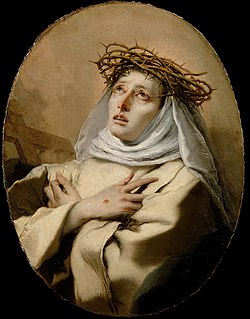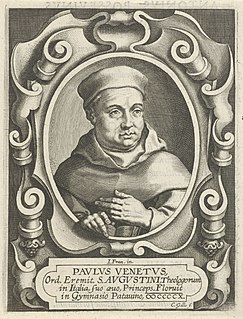 W
WGiovanni d'Andrea or Johannes Andreæ was an Italian expert in canon law, the most renowned and successful canonist of the later Middle Ages. His contemporaries referred to him as iuris canonici fons et tuba. Most important among his works were extensive commentaries on all of the official collections of papal decretals, papal judgments in the form of letters to delegated judges that were at the core of canon law.
 W
WBartolus de Saxoferrato was an Italian law professor and one of the most prominent continental jurists of Medieval Roman Law. He belonged to the school known as the commentators or postglossators. The admiration of later generations of civil lawyers is shown by the adage nemo bonus íurista nisi bartolista — no one is a good jurist unless he is a Bartolist.
 W
WGiovanni Boccaccio was an Italian writer, poet, correspondent of Petrarch, and an important Renaissance humanist. He was known par excellence as the Certaldese, and one of the most important figures in the European literary panorama of the fourteenth century. Some scholars define him as the greatest European prose writer of his time, a versatile writer who amalgamated different literary trends and genres, making them converge in original works, thanks to a creative activity exercised under the banner of experimentalism.
 W
WCatherine of Siena, a lay member of the Dominican Order, was a mystic, activist, and author who had a great influence on Italian literature and the Catholic Church. Canonized in 1461, she is also a Doctor of the Church.
 W
WDomenico Cavalca was an Italian writer.
 W
WChristine de Pizan or Pisan, born Cristina da Pizzano, was a poet and author at the court of King Charles VI of France and several French dukes. Venetian by birth, Christine served as a court writer in medieval France after the death of her husband. Christine's patrons included dukes Louis I of Orleans, Philip the Bold, and John the Fearless. Her best known works include The Book of the City of Ladies and The Treasure of the City of Ladies, both written when she worked for John the Fearless of Burgundy. Her books of advice to princesses, princes, and knights remained in print until the 16th century.
 W
WDino Compagni was an Italian historical writer and political figure.
 W
WBartholomew of San Concordio was an Italian Dominican canonist and man of letters. He was the author of the Summa de casibus conscientiae (1338) and of the Ammaestramenti degli antichi.
 W
WPietro de' Crescenzi, Latin: 'Petrus de Crescentiis', was a Bolognese jurist, now remembered for his writings on horticulture and agriculture, the Ruralia commoda. There are many variant spellings of his name.
 W
WDante Alighieri, probably baptized Durante di Alighiero degli Alighieri and often referred to simply as Dante, was an Italian poet, writer and philosopher. His Divine Comedy, originally called Comedìa and later christened Divina by Giovanni Boccaccio, is widely considered the most important poem of the Middle Ages and the greatest literary work in the Italian language.
 W
WGiovanni Dondi dell'Orologio, also known as Giovanni de' Dondi, was an Italian physician, astronomer and mechanical engineer in Padua, now in Italy. He is remembered today as a pioneer in the art of clock design and construction. The Astrarium, which he designed and built over a period of 16 years, was a highly complex astronomical clock and planetarium, constructed only 60 or so years after the very first mechanical clocks had been built in Europe, and demonstrated an ambitious attempt to describe and model the planetary system with mathematical precision and technological sophistication.
 W
WAlexander of San Elpidio (1269–1326) was an Italian Augustinian. He was known as prior general of the order of Hermits of St. Augustine, as a writer on theology and political matters, and as bishop of Melfi.
 W
WGentile Gentili da Foligno was an Italian professor and doctor of medicine, trained at Padua and the University of Bologna, and teaching probably first at Bologna, then at the University of Perugia, Siena (1322-24), where his annual stipend was 60 gold florins; he was called to Padua (1325-35) by Ubertino I da Carrara, Lord of Padua, then returned to Perugia for the remainder of his career. He was among the first European physicians to perform a dissection on a human being (1341), a practice long that had been taboo in Roman times. Gentile wrote several widely copied and read texts and commentaries, notably his massive commentary covering all five books of the Canon of Medicine by the 11th-century Persian polymath Avicenna, the comprehensive encyclopedia that, in Latin translation, was fundamental to medieval medicine. Long after his death, Gentile da Foligno was remembered in the Nuremberg Chronicle (1493) as Subtilissimus rimator verborum Avicenne, "that most subtle investigator of Avicenna's teachings"
 W
WSaint John of Capistrano was a Franciscan friar and Catholic priest from the Italian town of Capestrano, Abruzzo. Famous as a preacher, theologian, and inquisitor, he earned himself the nickname 'the Soldier Saint' when in 1456 at age 70 he led a crusade against the invading Ottoman Empire at the siege of Belgrade with the Hungarian military commander John Hunyadi.
 W
WJordan of Pisa, also called Jordan of Rivalto, was a Dominican theologian and the first preacher whose vernacular Italian sermons are preserved. His cultus was confirmed on 23 August 1833 by Pope Gregory XVI and he was beatified in 1838; his day is either March 6 or August 19. His relics are in the church of Santa Caterina in Pisa.
 W
WMondino de Luzzi, or de Liuzzi or de Lucci,, also known as Mundinus, was an Italian physician, anatomist and professor of surgery, who lived and worked in Bologna. He is often credited as the restorer of anatomy because he made seminal contributions to the field by reintroducing the practice of public dissection of human cadavers and writing the first modern anatomical text.
 W
WOdoric of Pordenone, OFM (1286–1331), also known as Odorico Mattiussi/Mattiuzzi, Odoricus of Friuli or Orderic of Pordenone, was an Italian late-medieval Franciscan friar and missionary explorer. His account of his visit to China was an important source for the account of John Mandeville. Many of the incredible reports in Mandeville have proven to be garbled versions of Odoric's eyewitness descriptions.
 W
WOldradus de Ponte was an Italian jurist born in Lodi, active in the Roman curia in the early fourteenth century. Previously he had taught at the University of Padua. According to Joseph Canning he was an authority in both canon law and civil law, and his consilia are the earliest surviving ones.
 W
WPaul of Venice was a Catholic philosopher, theologian, logician and metaphysician of the Order of Saint Augustine.
 W
WFrancesco Petrarca, commonly anglicized as Petrarch, was an Aretine scholar and poet during the early Italian Renaissance, and one of the earliest humanists.
 W
WCino da Pistoia was an Italian jurist and poet.
 W
WMarco Polo was a Venetian merchant, explorer, and writer who travelled through Asia along the Silk Road between 1271 and 1295. His travels are recorded in The Travels of Marco Polo, a book that described to Europeans the then mysterious culture and inner workings of the Eastern world, including the wealth and great size of the Mongol Empire and China in the Yuan Dynasty, giving their first comprehensive look into China, Persia, India, Japan and other Asian cities and countries.
 W
WSaint Bernardo Tolomei was an Italian Roman Catholic theologian and the founder of the Congregation of the Blessed Virgin of Monte Oliveto. In the Roman Martyrology he is commemorated on August 20, but in the Benedictine calendar his optional memorial is celebrated on the previous day.
 W
WTurisanus de Turisanis was the Latin name of Pietro Torrigiano de' Torrigiani, a theoretical physician from a well-known Florentine family who taught medicine in Paris, c. 1305–19, and wrote an elaborated and influential series of commentaries on Galen's Microtechni, Plusquam commentum in Microtechni Galenii and a shorter De hypostasi urine Galeni. The two commentaries, all that survives of Torrigiani's output, were printed together by Ugo Rugerius in 1489, and in several later editions, both incunabula and 16th-century printings. The work took the conventional form of the set of quaestiones disputatae familiar in Scholasticism.
 W
WGuido da Vigevano or Guido da Vigevano da Pavia was an Italian physician and inventor. He is notable for his sketchbook Texaurus regis Francie, a catalog of military equipment, and his Anothomia Philippi Septimi, an illustrated work on dissection. Each provides insight into the state of medieval technology and medicine. As an inventor, Guido can be regarded as a distant forerunner of later Renaissance artist-engineers like Taccola, Francesco di Giorgio Martini and Leonardo da Vinci. As an anatomist, Guido documents the practices of the fourteenth-century Bolognese school and its esteemed doctor Mondino de Luzzi.
 W
WBonifazio Vitalini was an Italian jurist. It is now supposed that his name has become attached to works of Bonifacius Antelmi, somewhat earlier, and others. These attributions came with the era of printing.